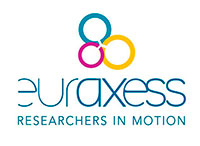Bolsa de TT-III em Reprodução Animal
Level 3-Technical Training Fellowship in Animal Reproduction
Nº: 2275
Área de conhecimento: Medicina Veterinária
Field of knowledge: Veterinary medicine
Nº do processo FAPESP: 2015/10606-9
FAPESP process: 2015/10606-9
Título do projeto: Inovações no diagnóstico precoce da gestação em bovinos
Project title: Innovations in the early pregnancy diagnosis in cattle
Área de atuação: Reprodução Animal
Working area: Animal Reproduction
Quantidade de vagas: 1
Number of places: 1
Início: 01/09/2018
Start: 2018-09-01
Pesquisador responsável: Guilherme Pugliesi
Principal investigator: Guilherme Pugliesi
Unidade/Instituição: FMVZ/USP
Unit/Instituition: FMVZ/USP
Data limite para inscrições: 10/08/2018
Deadline for submissions: 2018-08-10
Publicado em: 02/08/2018
Publishing date: 2018-08-02
Localização: Av. Duque de Caxias Norte, 225, Pirassununga
Locale: Av. Duque de Caxias Norte, 225, Pirassununga
E-mail para inscrições: gpugliesi@usp.br
E-mail for proposal submission: gpugliesi@usp.br
-
Resumo
Summary
Bolsa de TT-3 para alunos graduados de nível superior, sem reprovações em seu histórico escolar e sem vínculo empregatício, com dedicação de 16 a 40 horas semanais (o valor da Bolsa a ser paga será proporcional ao número de horas semanais) às atividades de apoio ao projeto de pesquisa.
O tempo de Bolsa TT-3 será descontado no caso de o interessado vir a usufruir de Bolsa de Mestrado ou Doutorado Direto.
Cronograma de atividades e resultados previstos:
As atividades do bolsista seguirão o cronograma previsto para os eventos e etapas do Estudo 1 do projeto Jovem Pesquisador. Acredita-se que o estabelecimento de um ensaio imunoenzimático para mensuração de P4 sem o uso de radioisótopos possa trazer um grande avanço e alternativa viável para mensurações de esteroides sexuais em fluidos biológicos de bovinos nos centros nacionais de pesquisa.
Perfil do candidato e justificativa de inclusão do bolsista no projeto:
Um bolsista recém graduado com interesse em trabalhar na área básica e aplicada de reprodução animal terá excelente treinamento técnico e prático com as atividades e biotécnicas reprodutivas planejadas no presente projeto, bem como com o uso de técnicas moleculares para estudar processos reprodutivos na fêmea bovina. A vivência prática da atividade amalgamará os conceitos recebidos nas disciplinas ligadas à reprodução animal e tornará o indivíduo melhor preparado profissionalmente. Além disso, a exposição ao contexto científico do projeto poderá despertar interesse do bolsista por esse aspecto da atividade.
Enviar Curriculum Lattes por email: gpugliesi@usp.br.
The identification of the pregnancy status earlier than the current methods done on about 30 days post-insemination allows a reduction in the economic gain. The main thesis is that biomarkers stimulated by conceptus in the blood are detectable at early pregnancy. This may allow the development of an early and innovator pregnancy diagnosis method in cattle.
Therefore, we aim to develop a diagnostic method through the quantification of the abundance of reported genes stimulated by the IFN-tau (ISGs) or new biomarkers coupled to the identification of the non-pregnant cows by the evaluation of the luteal function. Thus, in Study 1 new markers of pregnancy status may be identified by the transcriptome study of the immune cells and total peripheral blood on Days 14 and 18 post-insemination.
The purpose is to characterize the abundance of the known ISGs and of new transcripts stimulated by the presence of the conceptus in the total blood, polymorphinuclear immune cells (PMNs) and immune cells of the milk between Days 12 and 20 post-insemination in dairy and beef cows. Together, the luteolysis will be detected by Doppler ultrasonography through the changes in the size and vascularization of the corpus luteum (CL) e by the circulating progesterone concentrations to detect cows with non-functional CL.
For measurement of P4 concentrations, we aim to develop and validate an immunoenzymatic assay with high sensitivity and specificity to avoid the use of radioisotopes.
In Study 2, the accuracy of the developed methods will be analyzed in a moment before Day 20 post-insemination based in the combined or the single use of the expression of ISGs or the new biomarkes, and the CL function (by the P4 concentration or by the Doppler ultrasonography). Based on these results, we will evaluate in Studies 3 and 4 the productive and economic of the use of the proposed methods to identify non-pregnant beef and dairy cows and to propose a protocol for earlier re-insemination.
The new knowledge and the innovative methods here proposed will serve as basis for development of new technologies for meet and dairy systems. The practicability is guaranteed by the combined work of specialists in each analytical step and by the infrastructure of the institutions involved.
-
Enviar
Oportunidade - Oportunidades Abertas Open Opportunities
-
Fellowships Opportunities
